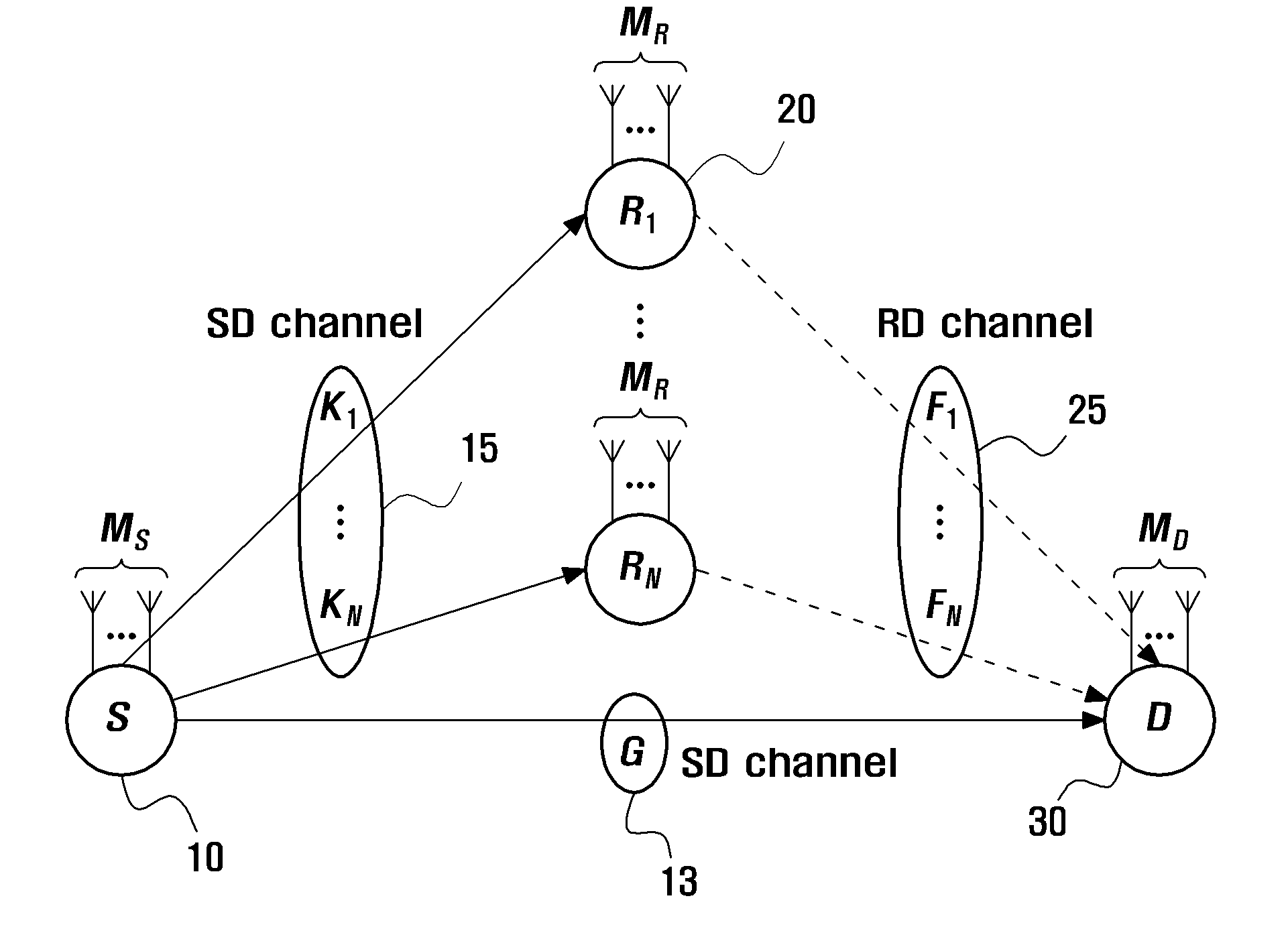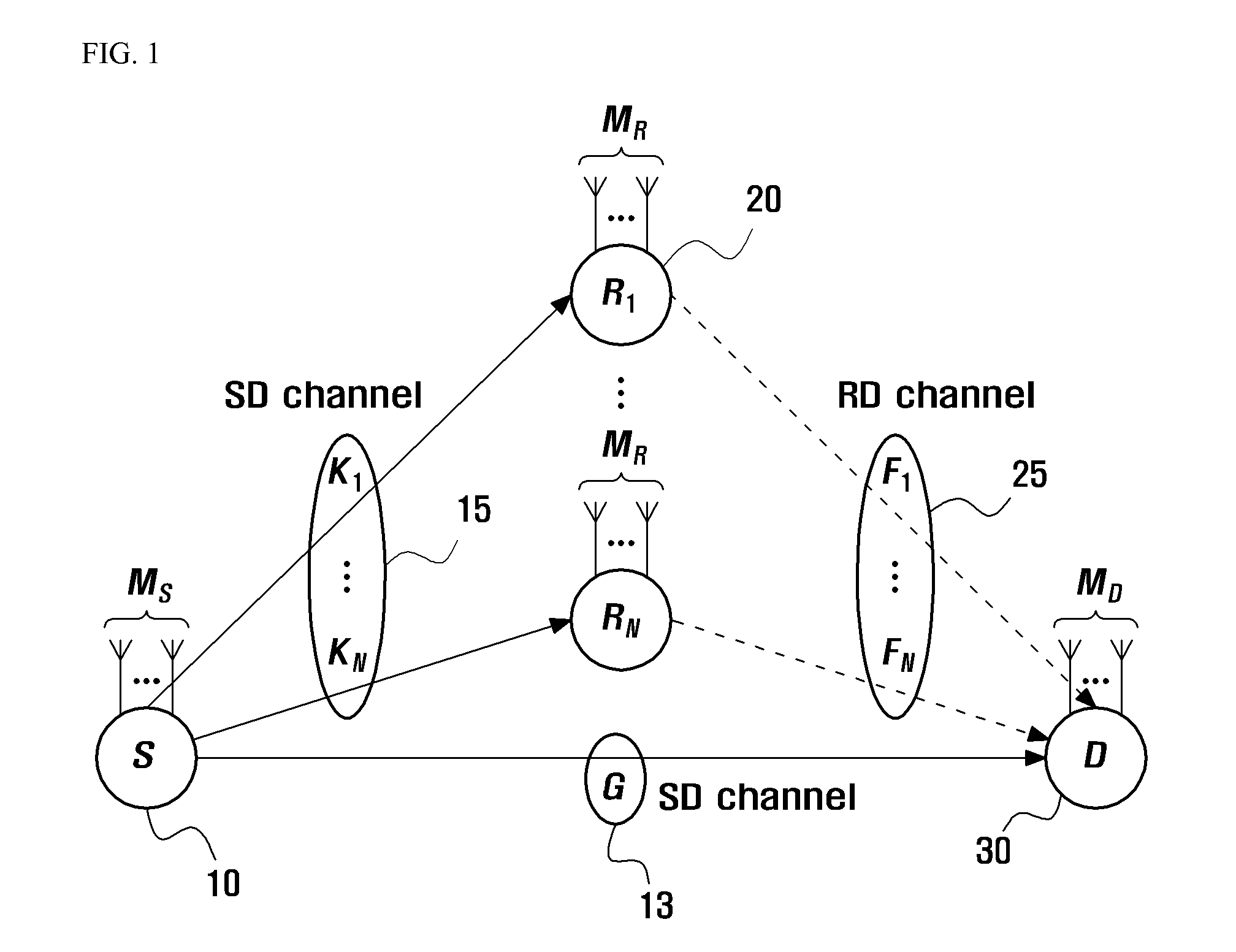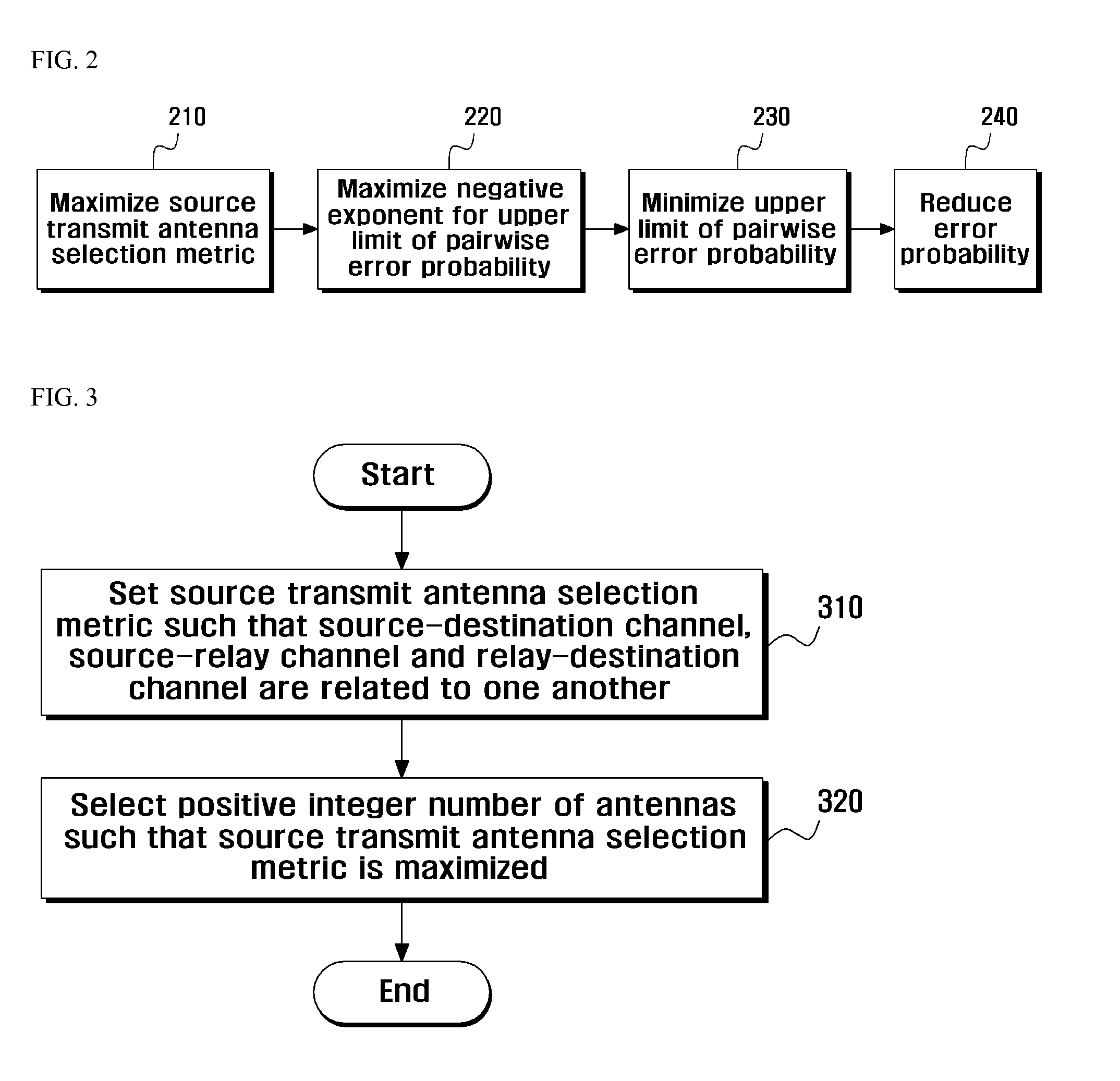Method for selecting source transmit antenna in cooperative MIMO communication system
a communication system and source transmit antenna technology, applied in the field of source transmit antenna selection in the cooperative multipleinput and multipleoutput (mimo) communication system, can solve the problems of difficulty in derive accurate signal-to-noise (snr), and high cost of rf chain size, etc., to achieve the effect of improving the lowered transmit performance and accurate performance standards
- Summary
- Abstract
- Description
- Claims
- Application Information
AI Technical Summary
Benefits of technology
Problems solved by technology
Method used
Image
Examples
first embodiment
[0047]In a first embodiment, suppose that a single antenna is selected at the source node and an encoding is not performed. In this case, the source transmit antenna selection metric set in Expression 2 is expressed by Expression 3:
Γj=PSG(j)2+∑i=1Nmin[PS2Ki(j)2,PRminx,x⋁≠xFi(XR(x)-XR(x⋁))2](3)
[0048]In this case, the present embodiment selects a single antenna to maximize the source transmit antenna selection metric set in Expression 3.
second embodiment
[0049]In a second embodiment, suppose that a single antenna is selected at each of the source node and the relay node and an encoding is not performed. In this case, the source transmit antenna selection metric set in Expression 2 is expressed by Expression 4:
Γj=PSG(j)2+∑i=1Nmin[PS2Ki(j)2,PRFi2](4)
[0050]In this case, the present embodiment selects a single antenna to maximize the source transmit antenna selection metric set in Expression 4.
third embodiment
[0051]In a third embodiment, suppose that both the source node and the relay node use orthogonal space-time code. In this case, the orthogonal space-time code may be Alamouti code, and the source transmit antenna selection metric set in Expression 2 is expressed by Expression 5:
Γj=PSG(j)2+∑i=1Nmin[PS2Ki(j)2,PRFi2](5)
[0052]In this case, the present embodiment selects two antennas to maximize the source transmit antenna selection metric set in Expression 5.
[0053]As discussed above, the present embodiments describe new source transmit antenna selection methods in the decode-and-forward cooperative communication system. It has been experimentally shown that these methods may yield a lower error probability than a conventional method. Experiment results will be shown with reference to FIGS. 4 to 6.
[0054]FIG. 4 illustrates experimental results when a single antenna is selected at a source node in accordance with a method of selecting a source transmit antenna according to an embodiment of...
PUM
 Login to View More
Login to View More Abstract
Description
Claims
Application Information
 Login to View More
Login to View More - R&D
- Intellectual Property
- Life Sciences
- Materials
- Tech Scout
- Unparalleled Data Quality
- Higher Quality Content
- 60% Fewer Hallucinations
Browse by: Latest US Patents, China's latest patents, Technical Efficacy Thesaurus, Application Domain, Technology Topic, Popular Technical Reports.
© 2025 PatSnap. All rights reserved.Legal|Privacy policy|Modern Slavery Act Transparency Statement|Sitemap|About US| Contact US: help@patsnap.com



